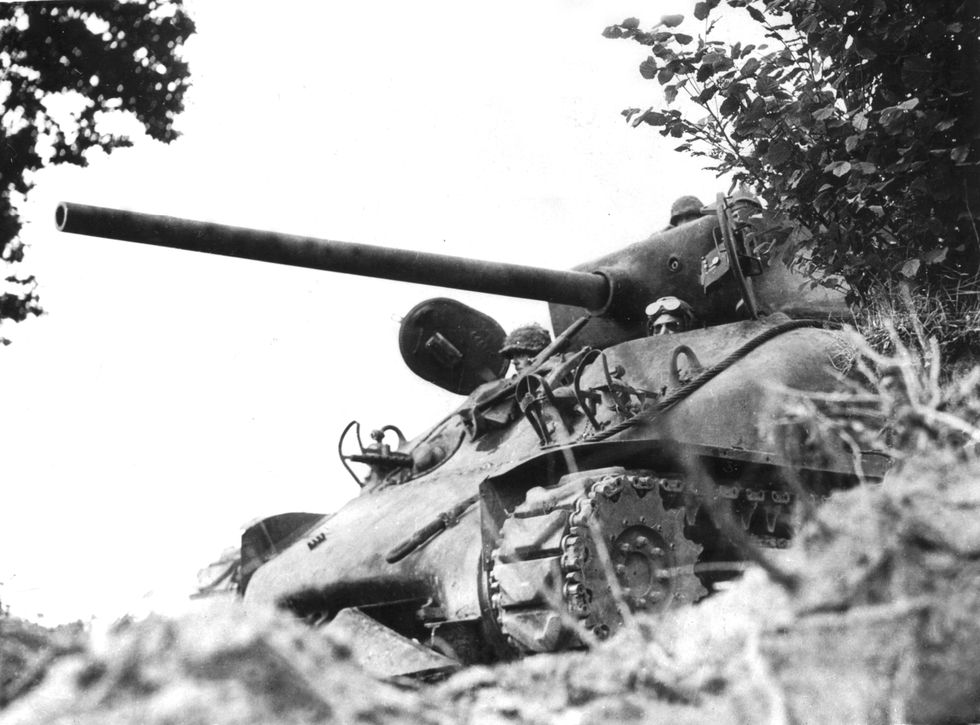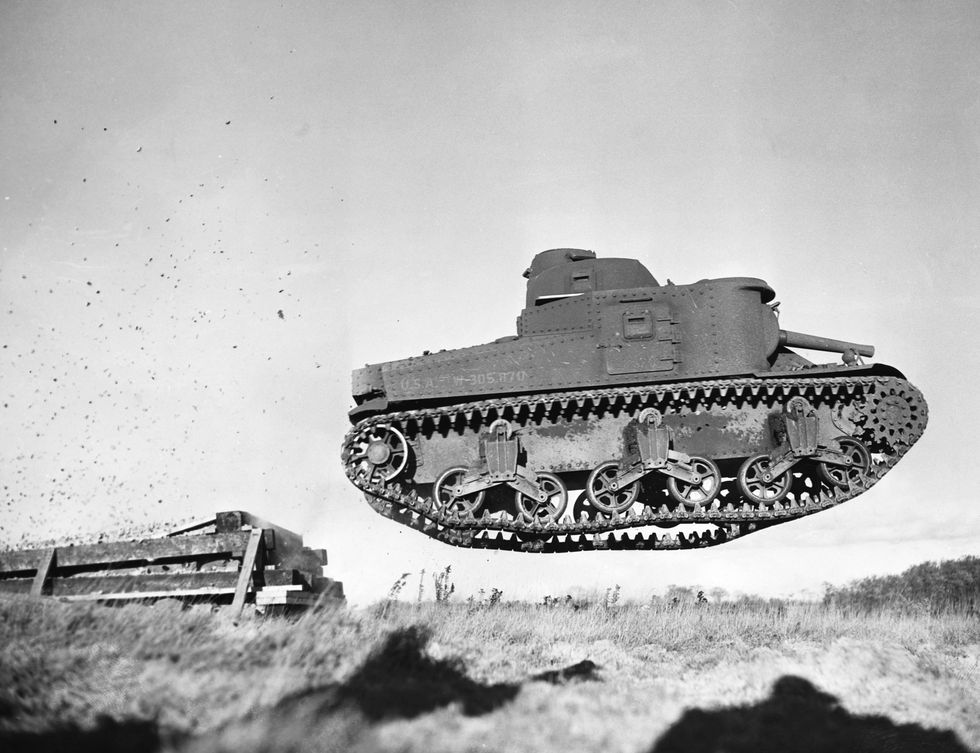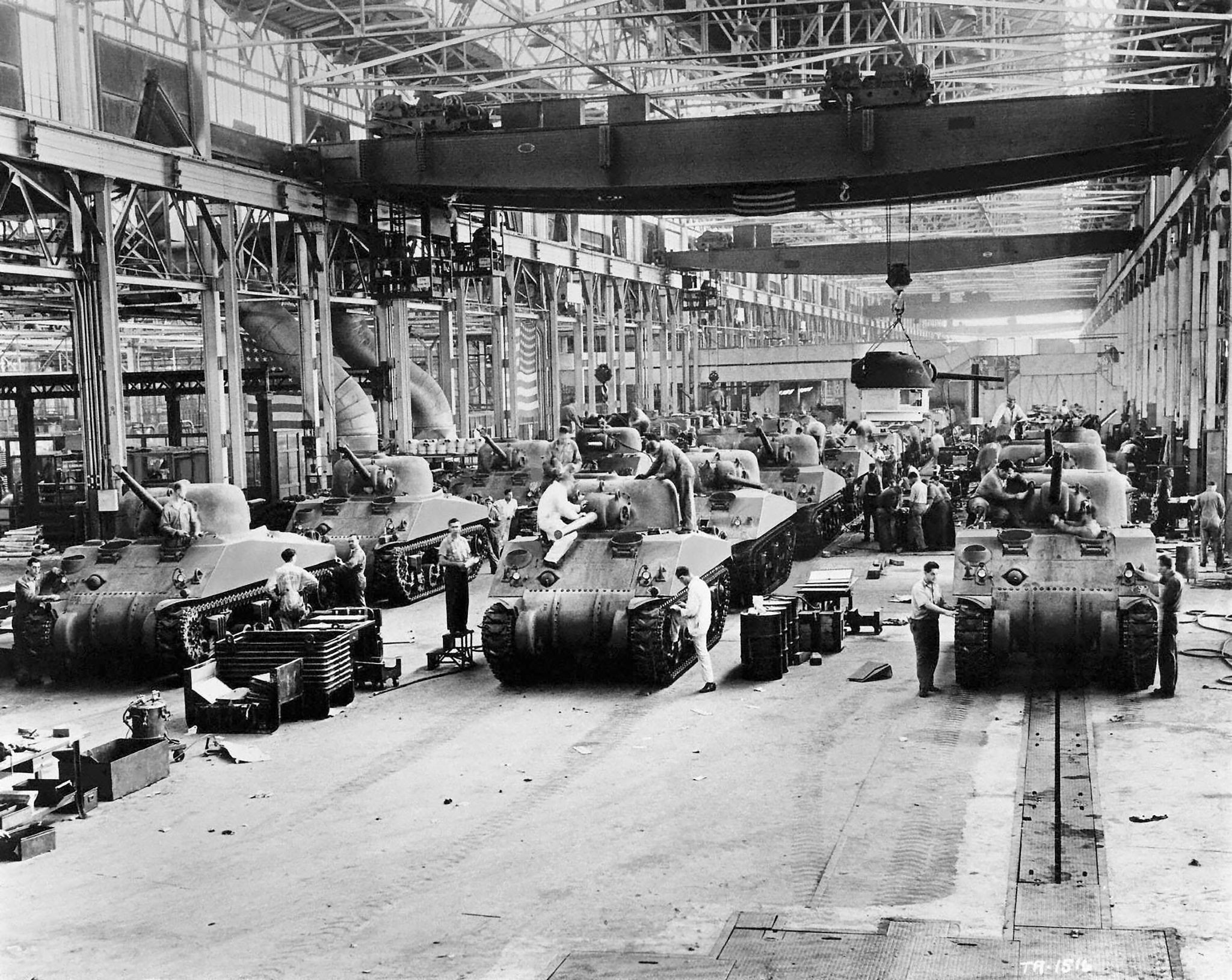The tank with the most impressive technical stats is not necessarily the most successful one. The best tank is the one that accomplishes its mission.
hink of history’s greatest tanks, and the M4 Sherman would seem to be an odd choice.
Its gun was too weak. Its armor was too thin. Its squat shape didn’t have that menacing look of the German panzers.
But gun size and armor thickness aren’t the only attributes that make a great tank. To appreciate that is to understand why the Sherman was key to Allied victory—and why it earned a place in history as one of the most badass tanks.
Hard Times for American Tanks
Had anyone in 1930 been asked whether the U.S. would build 50,000 Shermans during the Second World War, they would have laughed. By the end of the First World War, America had amassed 1,000 newly-developed “landships,” mostly manufactured by France and Britain. A decade later, isolationism and stingy defense budgets had reduced that force to just a few armored vehicles.
Under the National Defense Act of 1920, the Tank Corps was disbanded, and armor fell under the infantry branch, which wanted vehicles that moved at the speed of foot soldiers. The horse cavalry was forbidden to have tanks, so it built “combat cars” (actually light tanks) for scouting.
But by 1939, warfare was changing in tactics and technology. Germany had unleashed blitzkrieg (“lightning war”), which used fast-moving, hard-hitting panzer divisions to annihilate plodding enemy armies stuck in the trench-war mindset of World War I. At the same time, a new generation of tanks had replaced the slow, clumsy rhomboids and toy-like vehicles of World War I. The Second World War became a marathon arms race, especially in armor and aviation. For 150 years, British redcoats essentially used the same Brown Bess musket. In less than a decade, Germany went from the 5-ton Panzer I tank of 1934—armed with just two 7.92-millimeter machine guns—to the 60-ton Tiger I of 1942, armed with an 88-millimeter high-velocity cannon.
Building Tanks From Scratch
Though the Axis powers had been feverishly rearming since the early 1930s, America was barely in the race. Between 1930 and 1939, the U.S. produced only about 500 tanks, compared to 6,000 new German tanks by 1940. In 1939, the U.S. tank arsenal mostly comprised the 12-ton M2A4 light tank, half the weight of the new German Panzer IV and the Soviet T-34 medium tanks.
Shocked by how easily the German blitzkrieg conquered most of Western Europe, the U.S. Army hastily designed the bizarre M3 medium tank (called the “Lee” by the Americans, and the “Grant” by the British). The Grant was fully 10 feet tall and armed with a fixed 75-millimeter cannon in the front hull, which required pivoting the entire tank to aim the gun. British crews in North Africa preferred Lend-Lease Grants to notoriously poor British tanks such as the Crusader. Soviet crews nicknamed the Grant “coffin for seven brothers.”
Regardless, the U.S. needed another tank. The result was the M4 Sherman.
A Flawed Concept
Tank design is a delicate balance between firepower, protection, and mobility; the precise mix depends on how an army intends to use the vehicle.
The Americans were diligent enough to study how the German blitzkrieg conquered France in six weeks, but they drew the wrong conclusions. They believed the key to success was to have infantry breach enemy lines, which the tank divisions would then exploit to drive deep into the enemy rear, just as the German panzers had done.
The problem was that senior U.S. Army officers—notably Lt. Gen. Leslie McNair, commander of the Army Ground Forces—believed that American tanks shouldn’t fight other tanks. Instead, that would be the job of anti-tank guns towed by trucks or tank destroyers (such as the M10 and M18 Gun Motor Carriages) that were essentially fast but lightly armored tanks that would pick off the panzers using hit-and-run tactics. The regular tanks would avoid enemy armor and focus on exploiting breakthroughs.
The concept proved disastrous. Towed anti-tank guns were not mobile enough, while the tank destroyers were too thinly armored to take on German tanks.
Yet that philosophy had already shaped the Sherman. If the M4 wasn’t meant to battle enemy tanks, then it didn’t need to have the biggest gun or thickest armor. It merely needed to have adequate firepower, protection, and speed, as long as it was mechanically reliable enough to advance long distances during a breakthrough without requiring extensive logistics and maintenance.
That called for a medium tank. World War II-era armies used a mix of armor classes. Heavy tanks like the 70-ton King Tiger, with a top cross-country speed of 12 miles per hour, could break through enemy defenses—but they were expensive and too slow to exploit a breakthrough. Light tanks, such as the 17-ton U.S M5 Stuart, were cheaper, but were vulnerable on battlefields that became ever more lethal to armored vehicles.
By 1945, armies were moving toward medium tanks, such as the Sherman, the T-34, and Germany’s Panther. These were jack-of-all-trade vehicles that packed enough firepower and protection to survive on the battlefield, while retaining enough mobility to maneuver. After World War II, medium tanks would evolve into modern main battle tanks, such as the M1 Abrams, Leopard 2 and T-72.
An Off-the-Shelf Tank
The Sherman is a prime example of the biggest reason the Allies defeated the Axis: they made better use of their resources. From having virtually no tanks and a peacetime economy, America had to build an armored armada that would eventually grow to 16 armored divisions—plus 70 independent tank battalions—by 1945. In addition, the U.S. had to provide Lend-Lease vehicles for Britain, the Soviet Union, and other nations.
But where would this steel cornucopia come from? The U.S. didn’t have extensive experience in designing and building armored vehicles. What it did have was the world’s greatest automobile manufacturing industry. So the Sherman became an off-the-shelf tank, a standardized weapon built for mass production, using components that American factories could easily churn out.
The Sherman’s chassis came from the Grant. The powerplant was based on aircraft engines from Wright, and automobile engines from General Motors, Ford, and Chrysler. Components flowed from companies that had once produced trucks and railroad engines.
The M4’s 75-millimeter (and later 76-millimeter) guns had respectable anti-tank capability for the 1940s. Perhaps more important was that they could fire reasonably powerful high-explosive shells, a vital consideration given that 80 percent of targets the Sherman engaged were soft targets such as infantry, anti-tank guns, and bunkers. “Tank versus tank fighting was only a small aspect of World War II tank combat,” author Steven Zaloga, who has written numerous books on the Sherman and other tanks, tells Popular Mechanics. “Judging the Sherman simply by this criteria distorts any measure of its overall combat effectiveness.”
The basic Sherman weighed about 33 tons and stood about 9 feet tall. In addition to a main gun, it was armed with one .50-caliber and two .30-caliber machine guns. Armor protection was about 2 inches thick in the front and 1.5 inches on the sides and rear. Despite the reputation of German weapons as having superior technology, the Sherman did have advanced features such as a gyrostabilizer to keep the gun locked on target while the Sherman was moving and a power-assisted turret for faster traverse.
While German tank production and logistics were complicated by manufacturing small quantities of numerous models, the Sherman became the building block of Allied armor in Europe as well as the Pacific. Its versatility enabled more than 70 variants, including medium tanks, assault tanks, amphibious tanks, self-propelled anti-tank guns and artillery, flail tanks to clear mines, recovery vehicles, turret-mounted multiple rocket launchers, flame throwers, and searchlight vehicles.
The Test of Combat
The Sherman was a good tank for its class. “The M4A3, with a 76-millimeter gun, remained comparable or superior to other medium tanks of the period such as the German PzKpfw IV J or Soviet T-34-85,” Zaloga says. “It was not comparable to much heavier tanks such as the Tiger or Panther that had better armor and firepower, but were 10 tons or more heavier.”
But what was an excellent design in 1942 began to lag as the war raged on. The U.S. failed to notice the warning signs, such as the appearance of the Tiger I on the Eastern Front and in North Africa in 1942−1943. The Germans were increasing the firepower and armor of their heavy and medium tanks, but the U.S. Army felt no urgency to do likewise with the Sherman.
Source: popularmechanics



